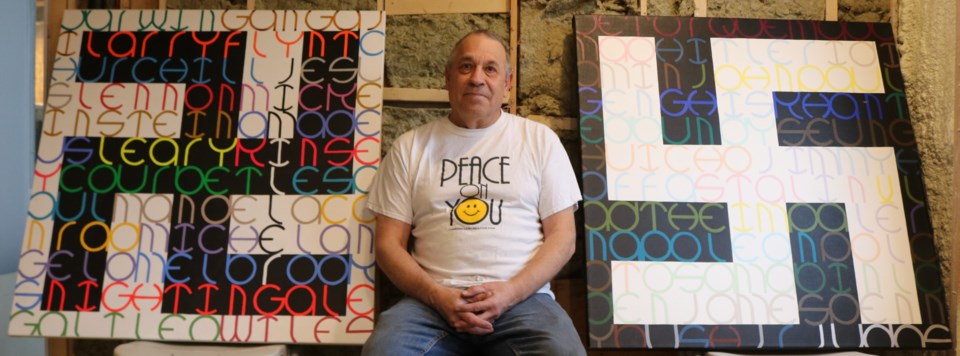A Prince George artist is taking is seeking a B.C. Supreme Court review of a B.C. Human Rights Tribunal decision to dismiss a complaint after he was removed from a position on the Omineca Arts Council because he uses swastikas in his work.
In a petition and affadavits filed Wednesday at the Prince George courthouse, James Miller said he was elected to the OAC board in October 2018 and given the responsibility for communications. But roughly 36 hours later, he was told he had been removed from the position.
"The reason given was that I used swastikas in my artwork on my personal website and that any connection made between myself and the society, as a board member, would be detrimental to the society," he said in an affadavit.
In March, he filed a complaint to the HRT, alleging religious discrimination. In June, HRT chair Diana Juricevic denied the claim because Miller failed to identify his religion and explain how it was a factor in the OAC's conduct.
She also said his complaint appeared to really be about protecting artistic freedom and free speech, which is not the purpose of the B.C. Human Rights Code.
"It is true that the swastika is a symbol found in many cultures throughout history where it holds positive meaning," Juricevic said. "However, the swastika also holds an extreme negative meaning based on its use by the Nazi government during World War II; and because of this it is looked upon with zero tolerance."
In July, Miller replied with a letter to Juricevic saying he chose religion as the basis of his complaint "because my belief system, my religion if you will, includes the right for me to use any symbol in my art, religious or not."
In a reply sent in September, Juricevic held her ground, although she agreed with Miller that the Code does not protect against all discrimination, only a narrow scope
"A belief system is not synonymous with genuinely held religious beliefs or not having religious beliefs. You have a right to your genuine non-belief, but you do not explain how the swastika is necessary for you to adhere to it. I do not see religion - as provided for in the narrow scope of the Code - as a factor in your situation," Juricevic said.
She also addressed Miller's criticism of her "zero tolerance" comment.
"A better use of words would have been '...it is looked upon with zero tolerance by many in our society.'"
From the court, Miller is seeking a judgment that will allow his complaint to be considered by a body other than the HRT and, if that cannot happen, either order the HRT to hold a hearing into his complaint or have someone other than Juricevic consider his appeal of her dismissal.
Should the court order a hearing, Miller also said Juricevic should not be involved in that process, saying her "zero tolerance" comment indicated bias.
Miller's petition to the court includes examples of his work - among them two paintings of swastikas, one covered with the names of people he admires and another of those he feels are evil. Miller's name is on both works.
"It depends on how you use it," he said when asked in an interview if there is a proper way to use the symbol. "And even if you use it for hate, do you hate the person that espouses hate or do you attack the person that espouses hate or do you love him? Because if you attack him back, you're no better than him."


